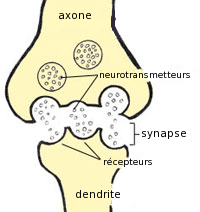
How do entheogens work
According to the famous anti-drug campaign of the 1980s, your brain on drugs resembles an egg in a hot frying pan, implying that drug use is physiologically harmful to the brain. In the following subsections, we will take a closer look how the different entheogen families work on the brain and what this means in terms of long-term effects and potential harm/damage. After reading the following sections, you should be able to answer for yourself whether or not there is any truth to the implications of the fried-egg campaign.
As stated above, in the short descriptions of the different categories of entheogens, these psychoactive substances are structurally related to neurotransmitters and interact with specific binding sites/receptors in the brain. Neurotransmitters are endogenous chemicals that are vital for signal transportation between neurons. The difference in effects of the various substances may be attributed to the various receptors with which they interact and the mechanism of interaction. While some substances, for example cannabis, bind to only a few types of receptors, others, such as LSD, bind to and interact with a wide array of receptors.

